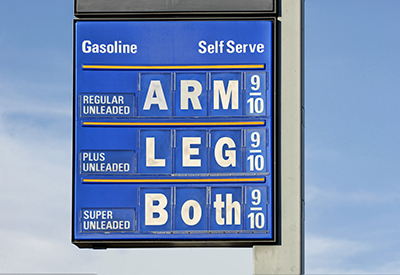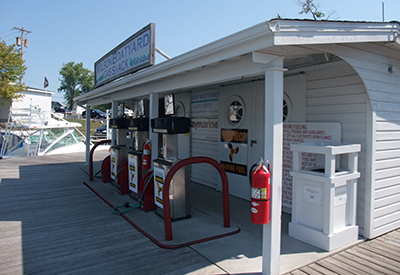Ask Andrew: Fuel Economy aboard

March 24, 2022
photo courtesy of Adobe Stock
I filled up last week at $1.90. Pundits are suggesting that prices will stay high throughout the summer. Radio and TV news have been flooded with ‘man on the street’ interviews that show the impact on the average driver.
How will these prices affect the average boater this year? Will we see more hours spent on the docks and fewer on the water? Will fuel efficiency become a top-of –mind selling point? Will we see a shift toward electric marine engines?
Time will tell – but for the majority of us, we’ll need to weather the storm as best we can.
There are a number of tips and tricks we can employ aboard to make the most of our boat’s fuel. BoatUS published an excellent article this week that I’ll break down:
 The single most important technique for increasing fuel efficiency is to have an efficient engine, in an efficient boat. Most apply to powerboats, but there are lessons for all. Increase efficiency in both, by:
The single most important technique for increasing fuel efficiency is to have an efficient engine, in an efficient boat. Most apply to powerboats, but there are lessons for all. Increase efficiency in both, by:
- Keep your engine tuned and running well: perform routine maintenance like oil and filter changes on schedule, and ensure that the engine is mechanically sound
- Match your propeller to your engine in terms of efficiency, rather than speed. Check your prop throughout the season to ensure there is no damage. Perform a wide-open-throttle test: on a calm day, run the engine to temperature, then increase speed until at maximum (or wide-open) throttle. If the boat isn’t able to reach (or overruns) the ideal WOT RPM dictated by the manufacturer, the prop should be changed to fall within the ideal specifications
- Travel efficiently – getting there fast isn’t always ideal for your pocketbook. Cruise smart: navigate well. Get on plane, if possible: use trim tabs effectively to reduce the drag of the boat through the water
- Lighten your load – a lighter boat requires less effort to push – so keep the surplus supplies and equipment to a minimum
- Reduce your drag: keep your waterline and prop free of weeds, freshen antifouling paint when possible, and lower canvas tops and covers underway where possible
- Rearrange your passengers, cargo and heavy items to evenly distribute loads throughout the vessel
- Use the buddy system: Rather than taking two boats on a cruise, try a couples’ weekend or family retreat on one boat.
Beyond onboard efficiency, there are a few fuel-system specific ways to ease the sting at the pumps:
- Only buy what you need. 2022 may be the year where fuel-tank condensation may be of less concern than price.
- Keep your fuel clean and contaminant free: replace filters at regular intervals
- Measure fuel flow: install a fuel meter so that fuel efficiency can be determined at varying speeds. During long cruises, the engine can then be run at the most optimal speed.
- Refuel smart: it may be tempting to store extra fuel (bought cheaply) in jerry cans aboard. Instead, buy quality, low-ethanol fuel in reasonable quantities
- Avoid idling excessively – instead, warm up and go. A diesel engine should be warmed up to operating temperature in order to operate most efficiently – but this can be done while travelling a low speeds (idling at dock isn’t necessary). A carbureted gas engine should be warmed to temperature before moving through the RPM range, but a fuel-injected engine can be run immediately.
I would hazard a guess that this won’t be the last time you hear about fuel prices, or have to think of ways to make the most of your boating dollars in 2022 – but I hope that this inspires your to get creative while still enjoying time aboard.
 Andrew McDonald is the owner of Lakeside Marine Services – a boat repair/maintenance firm based in Toronto. Andrew has worked in the marine industry for 12 years and is a graduate of the Georgian College ‘Mechanical Techniques – Marine Engine Mechanic’ program.
Andrew McDonald is the owner of Lakeside Marine Services – a boat repair/maintenance firm based in Toronto. Andrew has worked in the marine industry for 12 years and is a graduate of the Georgian College ‘Mechanical Techniques – Marine Engine Mechanic’ program.
Questions or comments for Andrew? Email him directly via: askandrew@lakesidemarineservices.ca




























